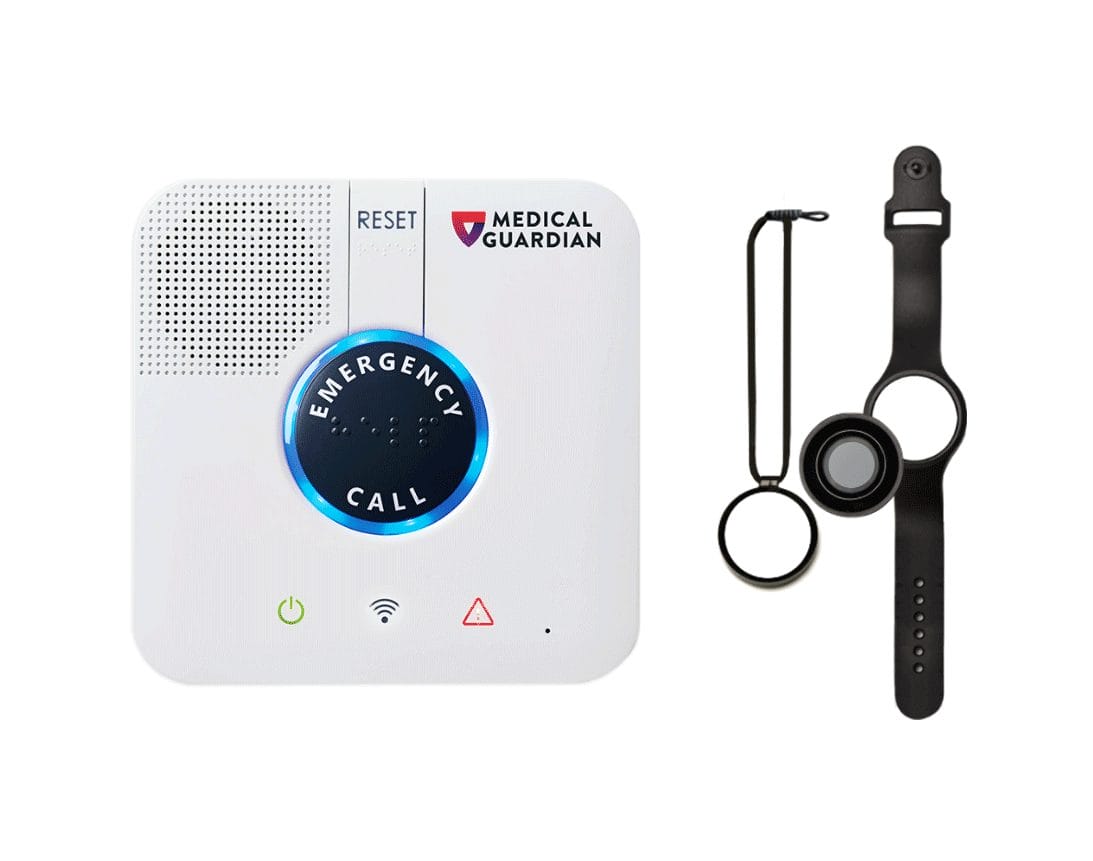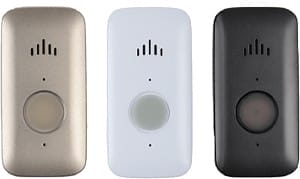
The cost of receiving long-term care at home or in a senior living community is rising, making it more difficult to cover senior care costs. Older adults can find it challenging to pay for the help they need to perform daily living activities, especially if they are on a fixed budget or have limited resources. The Department of Veterans Affairs (VA) offers the Aid and Attendance benefit to qualifying Veterans to help pay for care.
Fortunately, this benefit is not just for Veterans of the United States military. VA also awards the Aid and Attendance benefit to qualifying spouses, who can use this additional monthly income to help pay their long-term care expenses. Here, we’ll explain how Veterans’ spouses can qualify for Aid and Attendance, the spousal benefit amounts, and how to apply.
What is the Aid and Attendance benefit?
Aid and Attendance is a VA benefit available to eligible military Veterans and their surviving spouses. Beneficiaries receive this tax-free monthly income to help pay for care. Due to the health requirements that beneficiaries must meet to qualify, they typically have significant expenses for care services that help them perform activities of daily living, such as bathing, dressing, feeding, toileting, and transferring (moving from one position to another). Hiring help to perform these fundamental personal care tasks can be costly; Aid and Attendance aims to help beneficiaries cover these additional costs.
How to qualify for Aid and Attendance as a Veteran’s spouse
All Aid and Attendance applicants, including Veterans’ spouses, must fulfill requirements in specific areas. The areas include the Veteran’s military service, the health status of the person who requires care, and the income and net worth of the person who requires care. When the Veteran’s spouse hopes to receive the benefit, they must also meet marital status criteria. We’ll go over all these requirements now.
The Veteran meets military service requirements
Military service requirements for Aid and Attendance apply to all applicants, whether the hopeful recipient is the Veteran or the spouse. The Veteran to whom the spouse was married must have served in the military, and their service must meet these requirements:
- The Veteran must have served at least one day of active duty during dates of a wartime period, such as World War II, the Korean Conflict, the Vietnam War era, or the Gulf War.
- If the Veteran started active duty before September 8, 1980, they must have served at least 90 days of active duty in a U.S. military branch. The days of service do not have to be consecutive.
- If the Veteran started active duty after September 7, 1980, they must have served 24 months of active duty.
- The Veteran cannot have received a dishonorable discharge.
Here are some helpful tips to remember about the Veteran’s service eligibility:
- The Veteran’s service can still qualify even if they did not serve in an active combat zone.
- The Veteran’s service can qualify even if only one day of their service was during wartime. If, for example, 89 of the 90 days were served during peacetime and one day was during a wartime period, they can still qualify.
- The Veteran’s service can be in any U.S. military branch that existed during the approved wartimes, including the Army, Marine Corps, Navy, Air Force, Coast Guard, National Guard, and Merchant Marines. Veterans who were Reservists can qualify if they were called to active duty.
The spouse meets health criteria
This benefit intends to provide additional income to individuals with significant daily living needs. Therefore, VA requires that the applicant meets at least one of the following:
- They need help with at least two activities of daily living, such as feeding, bathing, dressing, or transferring (such as to and from bed).
- They have a physical or cognitive issue, such as Alzheimer’s disease, another form of dementia, or another health or medical issue.
- They have vision impairment, such as macular degeneration, or are diagnosed as legally blind.
The spouse’s income and net worth don’t exceed the limit
The Aid and Attendance eligibility criteria also include a maximum net worth limit that applicants must not exceed. This is because VA aims to provide additional income through this benefit to individuals who have significant personal care needs (as listed above) and limited income or resources to cover those costs. In 2024, qualifying applicants must not exceed the net worth limit of $155,356.
VA reviews this maximum net worth amount toward the end of each calendar year and may increase the amount. When VA changes this amount, it is typically related to the cost of living increase in the United States.
An applicant’s financial status is assessed based on their assets and annual income. Assets include essentially all property except the applicant’s car, primary residence, and basic home items, which VA states are “appliances that you wouldn’t take with you if you moved to a new house.” For example, some of the items VA wouldn’t count include furniture, jewelry, or family heirlooms.
Annual income is the applicant’s retirement income and includes other income, such as investment income. Certain expenses, including medical costs such as assisted living and home care for which the applicant is not reimbursed, are deducted from the income amount. The remainder is considered the applicant’s annual income.
The total amount of annual income and total assets cannot exceed the maximum limits for the applicant to meet this area of criteria.
The spouse and Veteran’s marital status meets the requirements
While Veterans who apply for this benefit need to meet all the above areas, spouses must meet the above criteria as well as marital status requirements to qualify:
- The spouse must currently be married to the Veteran, or the spouse must have been married to the Veteran for at least 365 days and was married to the Veteran at the time of their death.
- The spouse does not need to have been married to the Veteran during their time of qualifying service.
- VA recognizes common-law marriage if the state in which the spouse lives recognizes it.
Aid and Attendance benefit amounts for spouses
VA determines maximum benefit amounts, and it may adjust them on an annual basis. As with the financial requirements, VA reviews them annually and may adjust them for the following 12 months.
There are two situations in which a spouse can be eligible, and these situations have different maximum benefit amounts:
- The Veteran is alive and married to the spouse; the spouse needs care: The Veteran’s maximum monthly benefit in this situation is $1,806 per month in 2024.
- The Veteran is deceased and was married to the spouse at the time of death; the surviving spouse needs care: The spouse’s maximum monthly benefit in this situation is $1,478 per month in 2024.
It’s important to note that these are maximum monthly benefit amounts, which means spouses might receive less than the dollar amounts listed above. VA considers income and care costs to determine the exact amount it awards the spouse each month.
How spouses can apply for Aid and Attendance
The application is complex and requires significant financial, health, and military service documentation. There are many rules, and there are also many exceptions to rules, so it can feel like a daunting process. But that shouldn’t stop a Veteran’s spouse from applying for Aid and Attendance. This benefit can make a big difference in the life of a Veteran’s spouse, especially when it adds income to help you pay for the care you need to live each day comfortably and safely.
Let’s review some application basics, including how a spouse should apply, the documentation they need, and options for applying.
Determine whether the spouse or Veteran applies
If the Veteran is alive, the Veteran must submit the application (even if the spouse has health-related needs). In this case, the Veteran submits the application under the classification that the Veteran is married and their spouse needs care. VA looks at all household incomes and household care expenses in making the determination.
The only circumstance under which the spouse is the actual applicant is if the Veteran is deceased. In that case, the spouse submits the application under the classification that the Veteran is deceased and the surviving spouse needs care.
Aid and Attendance application documentation checklist
Applicants need to gather a number of documents that prove they meet each of the criteria areas. You’ll need to gather:
- Military service documents: To demonstrate that the Veteran meets the military service requirements, you’ll need the Veteran’s discharge paperwork (DD Form 214). You can order a copy through the National Archives. AidandAttendance.com, an online application solution for the benefit, also helps applicants obtain copies of this paperwork.
- Medical and care provider documents: You must also have your health care provider sign VA paperwork confirming you meet the health-related criteria. You and your doctor and long-term care provider will sign this form. If you live in a senior living facility, a representative from the facility can be considered the care provider, for example. These signatures confirm that you meet the health-related requirements.
- Financial documents: You must prove that your income and net worth do not exceed the annual maximum threshold. This documentation should include your income, unreimbursed medical expenses, and net worth. VA has a three-year look-back period: If you have given away any funds, VA has the right to look back at the gifts from the past three years.
Filing the Aid and Attendance application
As you can see from the extensive list of documents you’ll need, the application process is complex. You can choose to submit your application on your own; many applicants also choose to work with third-party companies that help them file their applications.
File on your own
If you choose to file your application on your own, keep a few things in mind: First, ensure that you fill out the appropriate forms. You’ll complete one form if the Veteran is alive and applying for the spouse to receive benefits and a different form if the Veteran is deceased and the surviving spouse is applying for the benefit.
If you are not fully prepared to file an application, you’ll need to access a different form, an Intent to File, which helps protect the initial date of your application. If and when you are awarded the benefit, you will receive monthly payments starting the first month after your claim is opened, which can be done with an Intent to File form submission or a fully developed claim. Because it takes significant time to review the application and submit revisions in the event that VA asks for more information, you will continue to incur long-term care costs during that time. It’s critical to file a complete application or submit the Intent to File to ensure you receive benefits for as much time as you intend.
Also, keep in mind that, based on your circumstances, you may need to complete and submit other forms.
When gathering the Veteran’s military service documents and your health and financial documents, make sure you obtain proof of all necessary details. When VA reviews your application, it will delay your approval and receipt of benefits if you need to submit more information. The complete application may be 30-plus pages long, and you will fax or mail it to VA.
You also have another option for filing your application. You can get help, which we’ll discuss next.
File online with help
Because the application is complex, third-party companies have emerged to help Veterans and their spouses apply for the Aid and Attendance benefit. You can usually choose services with different levels of assistance. For instance, AidandAttendance.com offers two levels of service: The basic service allows you to use its online application solution on your own. It guides applicants through the forms and alerts them to mistakes before they submit the application. Applicants can also get a PDF copy of their application to keep. The premium service includes those features and others, like support in entering the application data and a final review with a specialist.
Whichever method a spouse chooses, becoming an Aid and Attendance beneficiary can make a big difference in a person’s ability to receive the long-term care they need. Those who qualify require help with daily personal tasks and have limited resources to cover the cost of getting that care. VA steps in to help through its Aid and Attendance benefit, offering qualifying spouses much-needed additional income.








